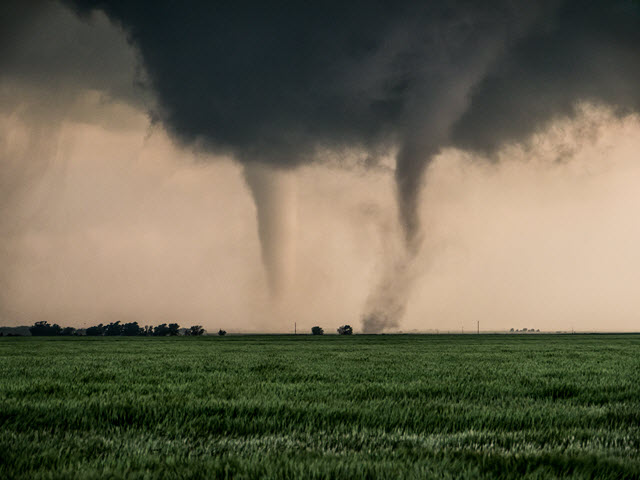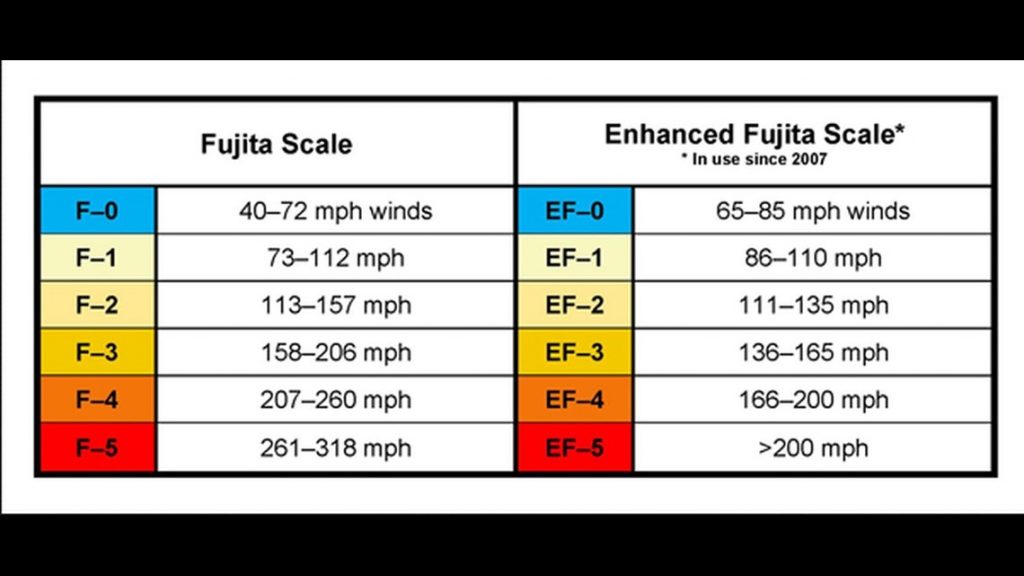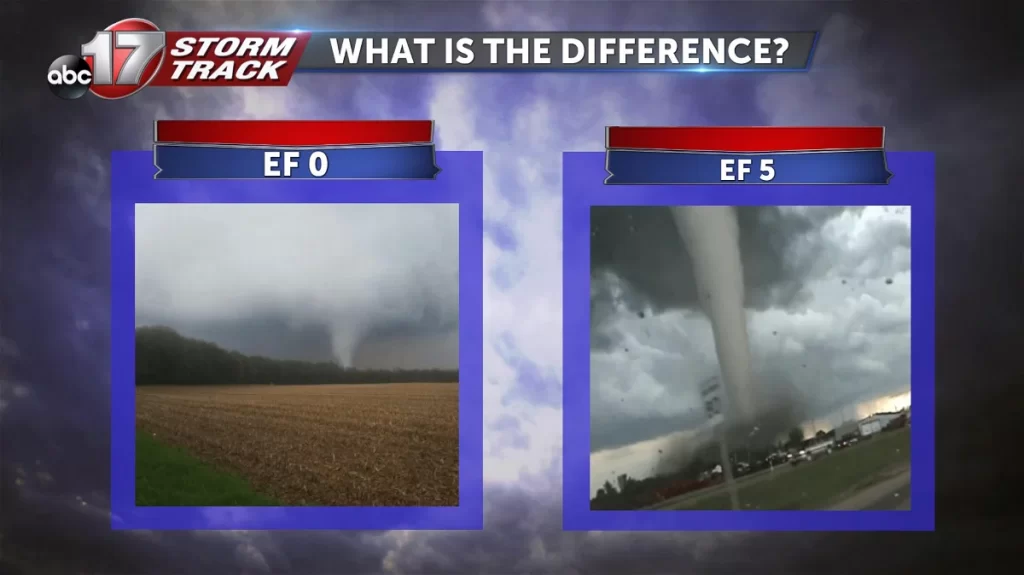Understanding the EF (Enhanced Fujita Scale) Used For Tornadoes

The Enhanced Fujita (EF) Scale is a system used to classify the strength of tornadoes based on the damage they cause to structures and vegetation. Developed in 2007 as an update to the original Fujita Scale, the EF Scale provides a more precise and comprehensive method for assessing tornado intensity.
The EF Scale consists of six categories, ranging from EF0 to EF5, with EF0 being the weakest and EF5 being the strongest. Each category is defined by specific wind speed ranges and the corresponding damage expected at those wind speeds.

EF0 (65-85 mph): These tornadoes cause light damage, such as broken tree branches, shallow rooted trees being toppled, and minor damage to chimneys or sign boards
EF1 (86-110 mph): Moderate damage occurs, including roof surfaces being peeled off, mobile homes being pushed off foundations or overturned, and exterior doors and windows being damaged.
EF2 (111-135 mph): Considerable damage is observed, with roofs torn off well-constructed houses, mobile homes completely destroyed, large trees snapped or uprooted, and light objects becoming projectiles.
EF3 (136-165 mph): Severe damage happens, including entire stories of well-constructed houses being destroyed, trains overturned, and forests being heavily damaged.
EF4 (166-200 mph): Devastating damage takes place, with well-constructed houses being leveled, structures with weak foundations blown away, and cars thrown.
EF5 (>200 mph): Incredible damage occurs, with strong frame houses being lifted off foundations and carried considerable distances, automobile-sized missiles flying through the air, and trees being debarked.

